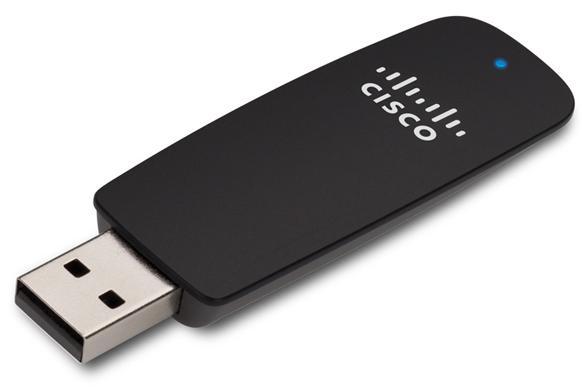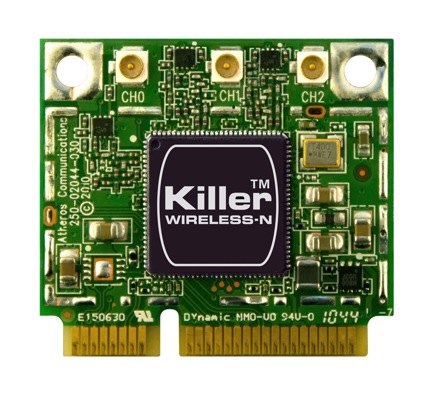Killer Wireless-N 1103 Review: Can Qualcomm Take On Centrino?
Where Does Qualcomm's Hardware Make Sense?
We’ve seen the data. Now what can we derive from it?
Clearly, 5.0 GHz deserves more attention that it’s getting. Of course, if everybody hopped onto 5.0 GHz, we’d inevitably wind up with similar problems to what we have today with 2.4 GHz, but let’s cross that bridge when we get there. Our results show that 5.0 GHz generally enables higher throughput and lower latency compared to 2.4 GHz in a common, high-RF use environment. Moreover, with less interference, 5.0 GHz seems to enable greater distances between client and access point without loss of connectivity.
As for our three adapters, there were many cases in which Cisco's USB option pulled its weight impressively well, although it still seems somewhat crippled in comparison to internal notebook adapters (and their more robust antenna setups), especially at distance.
Between Intel and Qualcomm, we expected a much closer race. Unfortunately, the Intel 6300 underperformed the AR9380-based option in many instances, often by a significant margin. We confess: we went into this story thinking that Qualcomm was blustering a bit. We’ve had too many years of vendors saying, “The secret sauce is there. It works. We’re better. Trust us.” This time, it was finally true. The Killer 1103 was stunning. It's just too bad you can't buy the card on its own.
But let’s finish here by taking a step back and looking at the really big question: once you’re done looking at benchmark data, does the 1103 make a difference in the real world? Is it worth whatever price an integrator is going to charge to step up?
While there are no hard and fast rules about ping time requirements in gaming, I'm tickled pink to jump on a server in the 50 ms range. Below that, it's really hard to tell a difference. Technical improvements simply cease to be relevant. And in all of our GaNE testing, only one spike from Cisco (in Location 3) ever exceeded 50 ms.
Should this matter to you? Should you be worried that your adapter might be prone to similar or worse latency spikes—the kind of spikes to which Qualcomm (with its newest driver) seems immune? Maybe. That’s for you to decide.
Get Tom's Hardware's best news and in-depth reviews, straight to your inbox.
If you only care about file transfers at near to moderate distances, then we don’t see a pronounced advantage to paying more money for Qualcomm's hardware. Even Cisco's USB-based adapter does decently if you’re not in too much of a hurry. But for applications where sustained, even performance is needed, such as video streaming, the Killer 1103 is the obviously more dependable choice, and it’s the new bar in wireless client adapters that other vendors need to surpass.
Current page: Where Does Qualcomm's Hardware Make Sense?
Prev Page Benchmark Results: GaNE, 5.0 GHz-
phamhlam I wish they would build better PCI-Express WiFi Adapter. Some of us can't have a cable going through our house or have our computer sit next to the router.Reply -
KelvinTy I think if you have the lowest latency at your end and leave everything on the server and internet end. Then it would be a lot better, especially there is input lag from everything, monitor, mouse, keyboard, wireless card, router and internet...Reply -
reghir There are 2 versions of the E4200 did you use version 1 or 2 as version 2 increases to 450Mbps on both bands and full spatial on its 3X3 streams?Reply -
MKBL I hope TH will review on powerline Ethernet adapter against typical RJ45 and wifi. For the same reason as phalmhlam, my desktop is connected to router by a long cable running across floor, which bothers me and my family sometimes. I've been considering powerline ethernet, but I can't make decision between that and wireless-N, because I have no idea which one has better performance/price.Reply -
CaedenV Great article! I learned quite a few things from it.Reply
I still think I will be waiting for 802.11ac before upgrading from G though. -
jaylimo84 M. Van Winkle,Reply
Thanks for this nice article.
I own an Alienware M17xR3, with the Killer 1103.
Upon installation, the driver was causing me issues (nothing big tho), and I decided to follow a forum recommendation and install the Atheros Osprey driver instead of Killer's.
It seems the two card are identical apart from the name on it. (Maybe I am misleaded)
It could be interesting to see if the Killer 1103 gets any improvement using the Killer driver vs. the vanilla Atheros drivers, and see if "years of working with the windows tcp stack" pays off. Or if your performance improvement is due to a good, but still normal card. -
CaedenV MKBLI hope TH will review on powerline Ethernet adapter against typical RJ45 and wifi. For the same reason as phalmhlam, my desktop is connected to router by a long cable running across floor, which bothers me and my family sometimes. I've been considering powerline ethernet, but I can't make decision between that and wireless-N, because I have no idea which one has better performance/price.Indeed, it is an issue. I ended up wiring the house through the HVAC ducts, which is a terrible idea (breaks all sorts of building codes), but better than drilling holes all throughout the house only to move to wireless within the next 5-10 years.Reply -
XmortisX I would like to try this out. If they can make a good pci-e/pci version of this card then definitely would try to push it with my clients. Even though we may get more labor hours for running wires the convenience and idea of avoiding HVAC ducts building codes makes this appealing.Reply

